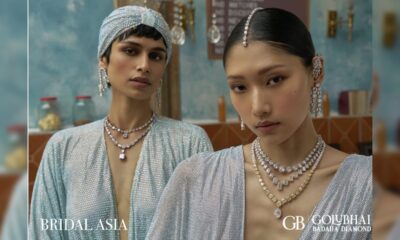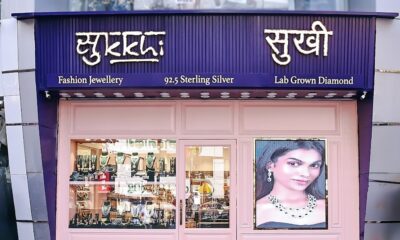JB Insights
Future of AI in jewellery industry lies in customized, value-driven solutions

Aniruddha Pal, Co-Founder and CEO, Algoneering speaks to JewelBuzz on the present and future of AI in the jewellery industry . He underscores that success of AI hinges on collaboration, data sharing, and a deep understanding of the specific needs of each organization. By embracing these principles, the industry can unlock the full potential of AI to enhance creativity, streamline operations, and ultimately drive greater success.



AI’s Role in the Jewellery Industry
AI is revolutionizing the jewellery industry across disciplines such as designing, manufacturing, streamlining operations, and even ERP and customer solutions. Its presence is reshaping the way operations are conducted, offering new efficiencies and possibilities.
AI Integration Across Industries
AI is making its mark in every industry, from fashion to daily life operations. The jewellery industry, being layered and complex, presents unique challenges. As tech entrepreneurs, we started exploring its potential three years ago, even without a deep jewellery background.
Early Challenges in AI for Jewellery
Initially, the idea of AI designing jewellery seemed far-fetched. Today, the focus has shifted to refining and improving AI-generated designs. The industry is ideating and exploring solutions to its daily challenges, though AI adoption requires clarity on specific problem statements.
AI’s Efficiency Over Perfection
While AI may not yet meet 100% accuracy, its ability to perform even 20% of tasks with high efficiency is valuable. For instance, tools like generative AI simplify processes like content creation, saving significant time on repetitive tasks.
Customization as a Core Requirement
Every organization in the jewellery industry has unique needs and perspectives. One-size-fits-all solutions don’t work. Customization, value-driven approaches, and understanding industry-specific nuances are essential for successful AI integration.
Operational Challenges in Jewellery Manufacturing
Jewellery manufacturing involves significant manual effort, leading to potential errors and missed deadlines. Streamlining operations with AI and implementing strong SOPs can address these issues effectively.



Generative AI in Jewellery Design
Generative AI offers inspiration by creating original jewellery concepts. However, the jewellery industry requires tailored platforms that focus on creating industry-specific designs rather than relying solely on generic tools.
Building a Strong AI Ecosystem
Establishing a robust AI system requires resource allocation, team upskilling, and infrastructure development. Solely relying on AI without supporting resources is not sustainable for long-term growth.



Industry Excitement vs. Realistic Adoption
While there is significant excitement about AI in the jewellery industry, the pace of adoption is slower than expected. Awareness, resource constraints, and organizational protocols are key factors impacting progress.
Importance of Data and Democratization
For AI to thrive, the industry must focus on structured data collection and sharing while maintaining security protocols. The example of Tata Memorial Hospital democratizing MRI data highlights the potential benefits of such an approach.



AI Penetration and Resource Constraints
Penetration of AI in the jewellery sector is slow due to limited awareness and specialized resources. While large brands may have dedicated AI teams, smaller manufacturers face cost and expertise challenges.
Customization and Collaboration as the Future
The future of AI in jewellery lies in customized, value-driven solutions. It hinges on collaboration, data sharing, and a deep understanding of the specific needs of each organization. Collaborative efforts between organizations and AI developers are crucial to training machines with relevant data and building effective models.
AI’s Role in Workflow and SOPs
While AI fits well in product development and reducing design timelines, a strong SOP framework is essential to complement its capabilities. This ensures precision and efficiency in the manufacturing process.
Overcoming Initial Resistance
Early resistance to AI stemmed from data-sharing insecurities and doubts about its ability to understand jewellery-specific nuances. Gradual adoption and collaboration have improved trust and usability.
The Journey Towards Realistic AI Designs
Significant progress has been made in training AI to design realistic jewellery pieces by addressing challenges like material composition, design elements, and client customization needs.



A Vision for the Future
Customization will continue to be the key driver of AI adoption. Structured data, team skill development, and a strong AI vertical are essential for achieving efficiency and long-term success in the jewellery industry.

Collaboration for a Better Future
To unlock AI’s full potential, industry bodies and councils must support collaborative efforts. This collective approach will help create successful models and drive the jewellery industry towards a promising future.

JB Insights
Shaping Gem Enthusiasts for a Global Retail Reality: Inside GSI’s Colored Stone Program
By Ramit Kapur, Managing Director GSI India
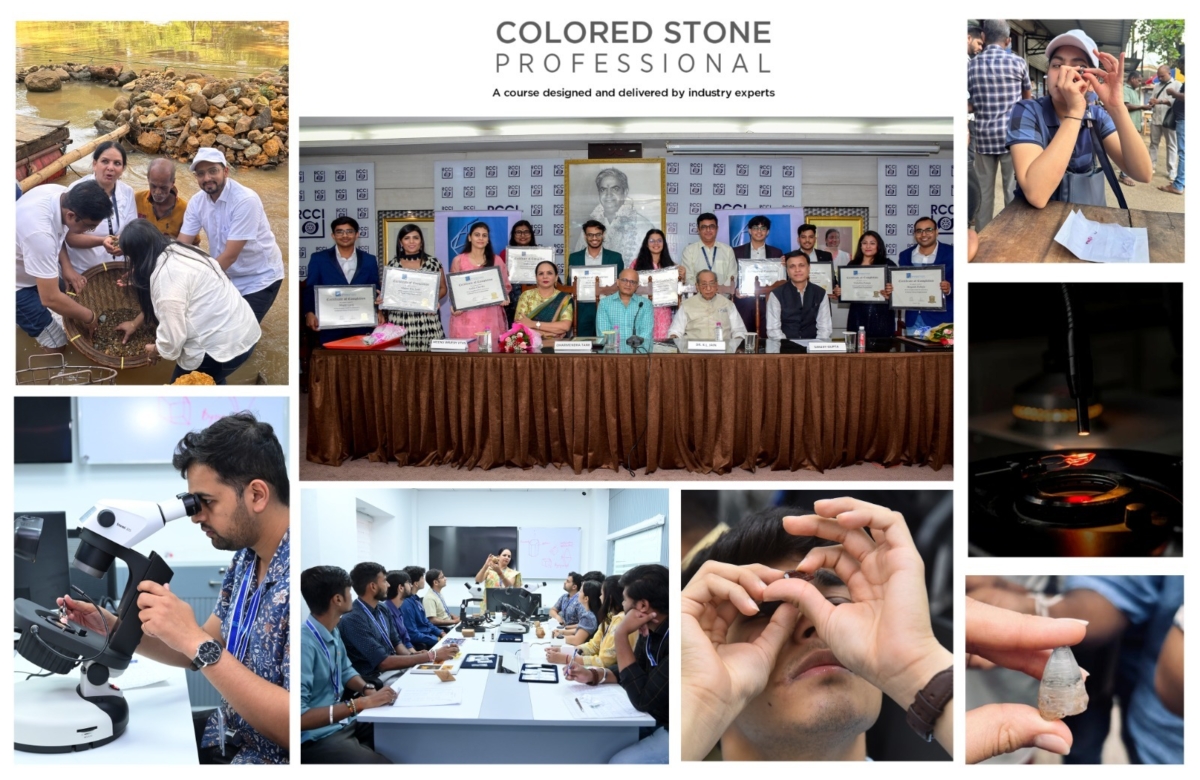
One of the recurring questions I hear from retailers, whether in the heart of Mumbai or in the luxury corridors of New York is this: Where do we find individuals who truly understand colored stones? Not just those who can name them or describe their appearance, but professionals who understand their essence. People who grasp quality, origin, treatments, pricing influences and most importantly, how all of it directly impacts customer trust and retail flow.
Too often, gemology education ends at surface-level theory. Students know the textbook answers but lack the confidence to apply that knowledge when faced with a real-world stone. That’s because being a gemological professional is never about just one thing; it’s a sum of many factors. Theory is essential, but without hands-on exposure, it stays abstract. Practical lab experience should be backed by a mindset that encourages critical thinking and pattern recognition. Add to that real-world exposure, problem-solving under pressure, and the ability to communicate insights clearly and you begin to shape someone truly capable.
A Lab-Driven Approach to Learning
That’s the exact gap GSI set out to address when we created the Colored Stone Professional (CSP) Diploma Program.
With our global expertise, advanced instrumentation, and access to live inventory, we are in a special position to build a course that doesn’t just skim the surface, but goes deeper, one that stands out in a sea of generic gemology programs. Our vision is to go beyond just another degree course and create professionals of the very standard we’d want to hire for our own labs: accurate, efficient, thoughtful. And once trained, whether they choose to become designers, sourcing leads, retail trainers, or full-time gemologists, the world becomes their oyster.
Our approach to this course is not purely academic. We built it from the inside out; as industry participants who live this work every day. GSI, as a global laboratory, examines gemstones daily from all major trading centers. Our experts are constantly updated; researching detection techniques, documenting treatment trends, and working with inventories that reflect the full range of market realities. With that vantage point, we are set to solve a real industry problem: the widening gap between gemological knowledge and real-world application.
The CSP Difference
I could write an entire book on why this course is different. And honestly, I can’t stress enough the value of learning from a global laboratory like GSI that is connected to daily realities across continents. That makes GSI a platform reflecting something much deeper than theory, it reflects practice, insight, and precision. So while I could list countless strengths of the Colored Stone Professional (CSP) Diploma, here are a few that I believe define its true character.
First, the practical exposure is unmatched. Students don’t just “learn” stones, they work with 800 gemstones across the span of the course. It’s a curriculum-integrated journey that helps them observe and identify inclusions, verify treatments, and understand what those treatments mean in real market conditions.
Then comes instrumentation. Students get the opportunity to attend advanced lab sessions, where they experience GSI’s state-of-the-art instrumentation firsthand, and understand its applicability. When they see how and why FTIR, UV-Vis, and advanced spectroscopy are used, they begin to appreciate the rigor behind every report.
We also take them to the source. Our mine visits aren’t just field trips. They’re reality checks. Students see rough material in its natural environment, understand how value begins at origin, and how supply chain complexities play out from mine to market. They grasp pricing at the root, not just from the price tag on a finished piece.
And finally, perspective. We bring in industry veterans for open sessions. These are not scripted lectures, they’re candid conversations. Students are encouraged to ask, challenge, and absorb insights from people who’ve spent decades in design, manufacturing, trading, and retail. The result is perspective rooted in reality.
International curriculum with a domestic blend.
The CSP diploma program has been carefully curated by some of the finest minds in the gem and jewelry world;not just in India, but globally. Our team includes global experts who ensure the curriculum remains current, rigorous, and industry-relevant across borders. It’s updated frequently to reflect the latest market realities, treatment discoveries, and sourcing challenges. The diploma itself is issued from our headquarters in New York, giving our graduates global credibility and recognition.
Through the CSP diploma program, we are building professionals who can sit across from a buyer and explain why two seemingly similar stones have a vast price difference, or why a particular origin commands a premium. That’s the kind of clarity that transforms retail experiences and builds trust. By the end of the program, every graduate stands at par with a fresher gemologist, equipped not only for technical positions but also to bring value in retail, sourcing, manufacturing, or design. In fact, designers who complete our program often find themselves pitching better, sourcing smarter, and delivering with far greater conviction.
JB Insights
Gold Prices May Touch ₹1 Lakh in H2 2025 Amid Strong Investment Demand: ICICI Report
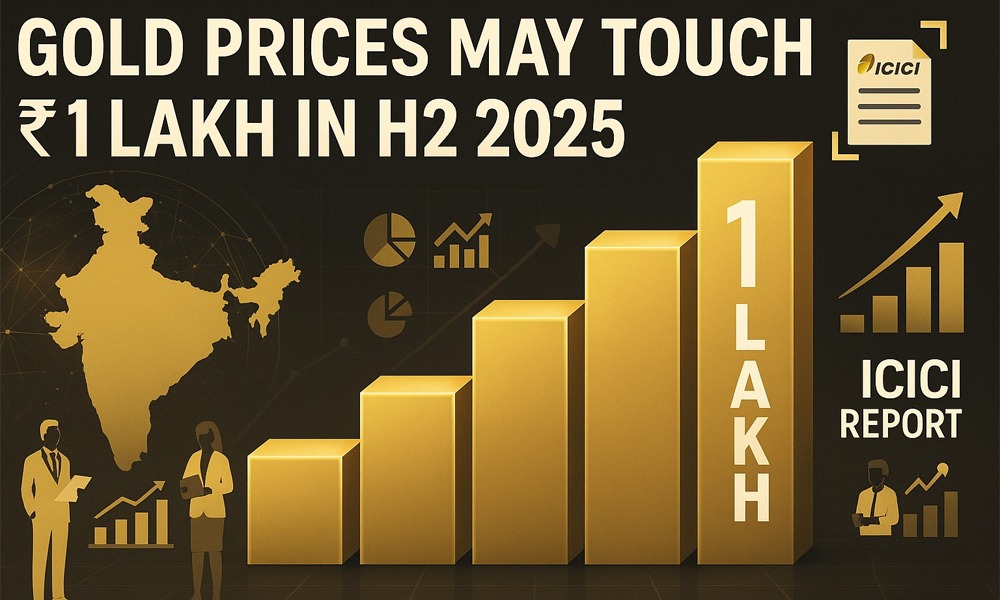
Gold prices in India are expected to trend higher in the second half of 2025, potentially reaching the ₹1,00,000 per 10 grams mark, according to a report by ICICI Bank Global Markets. Prices are currently trading in the range of ₹96,500 to ₹98,500 per 10 grams, but are forecasted to edge upward due to sustained investment demand and a mild depreciation in the Indian Rupee.
“Local gold prices are expected to continue trading with an upside bias, moving from a near-term range of ₹96,500–₹98,500 to the ₹98,500–₹100,000 range in H2 2025,” the report stated.
In June, domestic gold prices rose by 0.6% despite a global slowdown in momentum, supported by a 0.2% decline in the rupee. However, jewellery demand showed signs of weakening, with gold imports declining from USD 3.1 billion in April to USD 2.5 billion in May.
Investment demand, in contrast, remains strong. AMFI data showed net inflows of ₹2.92 billion into gold ETFs in May, following two months of outflows. Globally, SPDR Gold ETF holdings increased from 930 tonnes on June 1 to 948 tonnes by July 1, and speculative net long positions rose by 13,000 lots.
Despite gold’s YTD gains of 28%, prices have remained flat in recent weeks due to improving global risk sentiment. Key geopolitical developments, including a ceasefire between Israel and Iran and progress on U.S. trade agreements with the UK, Vietnam, Japan, India, and the EU, have eased safe-haven demand.
“The upshot is that easing geopolitical tensions and expectations that trade-war 2.0 could ease in magnitude have worked to limit further sharp upside emerging in gold prices,” the report noted.
While jewellery demand remains soft, strong investment-related buying continues to underpin the yellow metal’s upward momentum.
Feature
Navigating the Fine Line: How Jewellery Designers Can Draw Inspiration without Crossing into Plagiarism
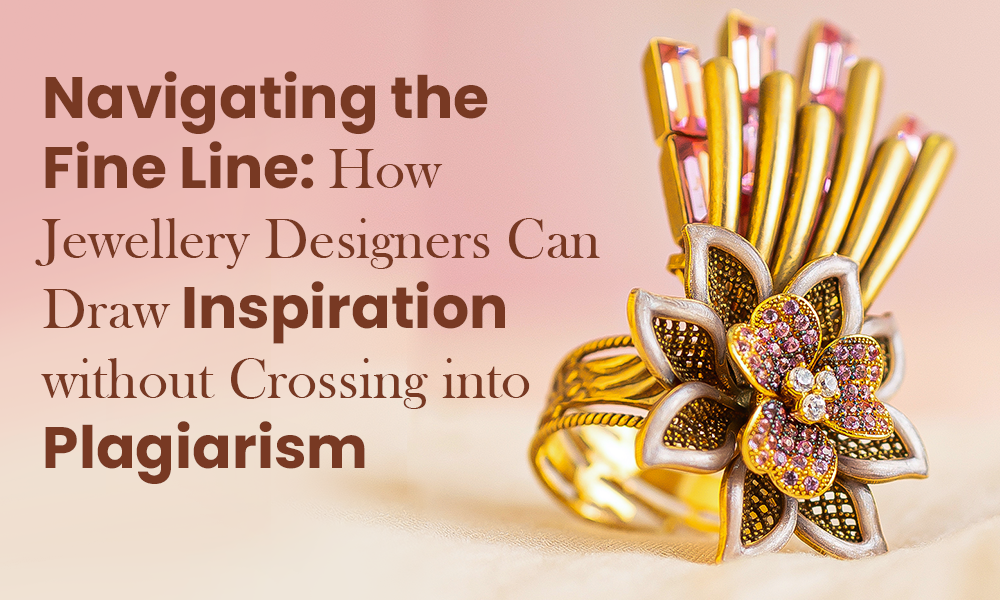
We’ve all been there — scrolling through social media, spotting a stunning design, and thinking, “This is amazing, I could do something with this.” Maybe you even screenshot it for later. That moment of admiration is totally normal, and yes, it’s how creativity often works — one spark leads to another.
But here’s the tricky part: when does inspiration cross the line into imitation? There’s a difference between being creatively influenced and replicating someone else’s hard work. The quote “imitation is the sincerest form of flattery” may sound nice, but in design, it’s also a fast track to losing your credibility.
This issue is especially relevant in the Indian jewellery market, a diverse ecosystem that includes couture artisans, mass-market retailers, and indie designers — all coexisting alongside a booming imitation market. When original designs are copied and mass-produced, it damages the brand identity of the creator, dilutes the uniqueness of their work, and erodes the value of true craftsmanship.
Being inspired is natural — but respecting originality is essential.
Let us have a look at what ace Jewellery Designers/ Brands from the industry have to say about Plagiarsim & Inspiration in jewellery designs:
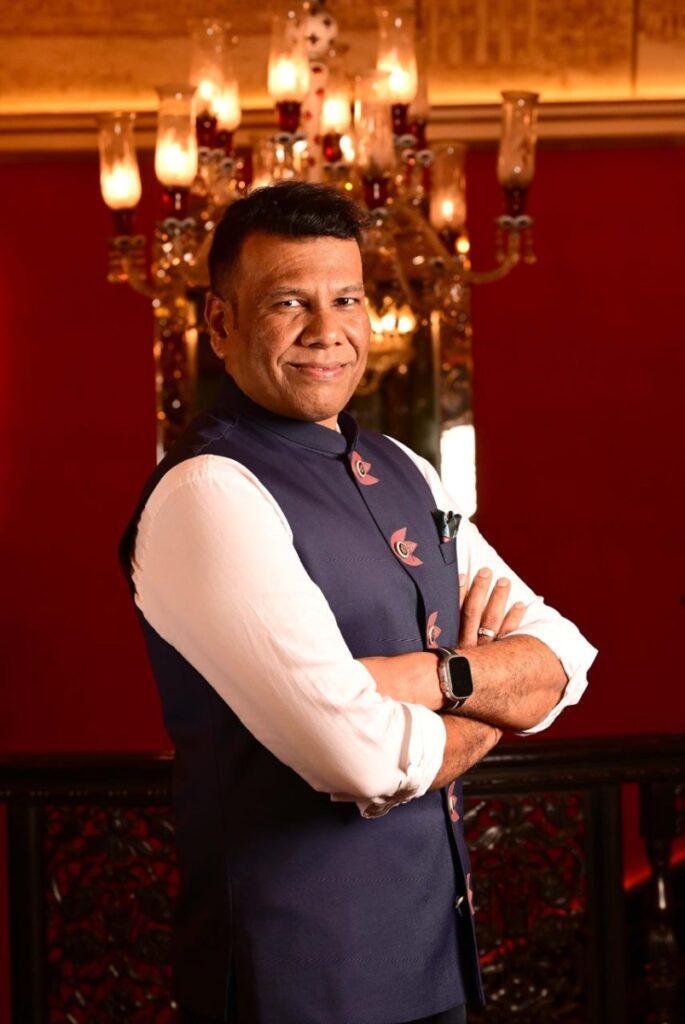
Avama Jewellers
Abhishek Kajaria, Founder and Owner
- How do you identify and cultivate your Unique Selling Proposition (USP) as a jewelry designer in a market full of competition?
At our luxury jewelry brand, our Unique Selling Proposition (USP) is rooted in innovative craftsmanship, attention to detail, and a deep understanding of our clients’ desires. We push the boundaries of design while staying true to our brand’s aesthetic..
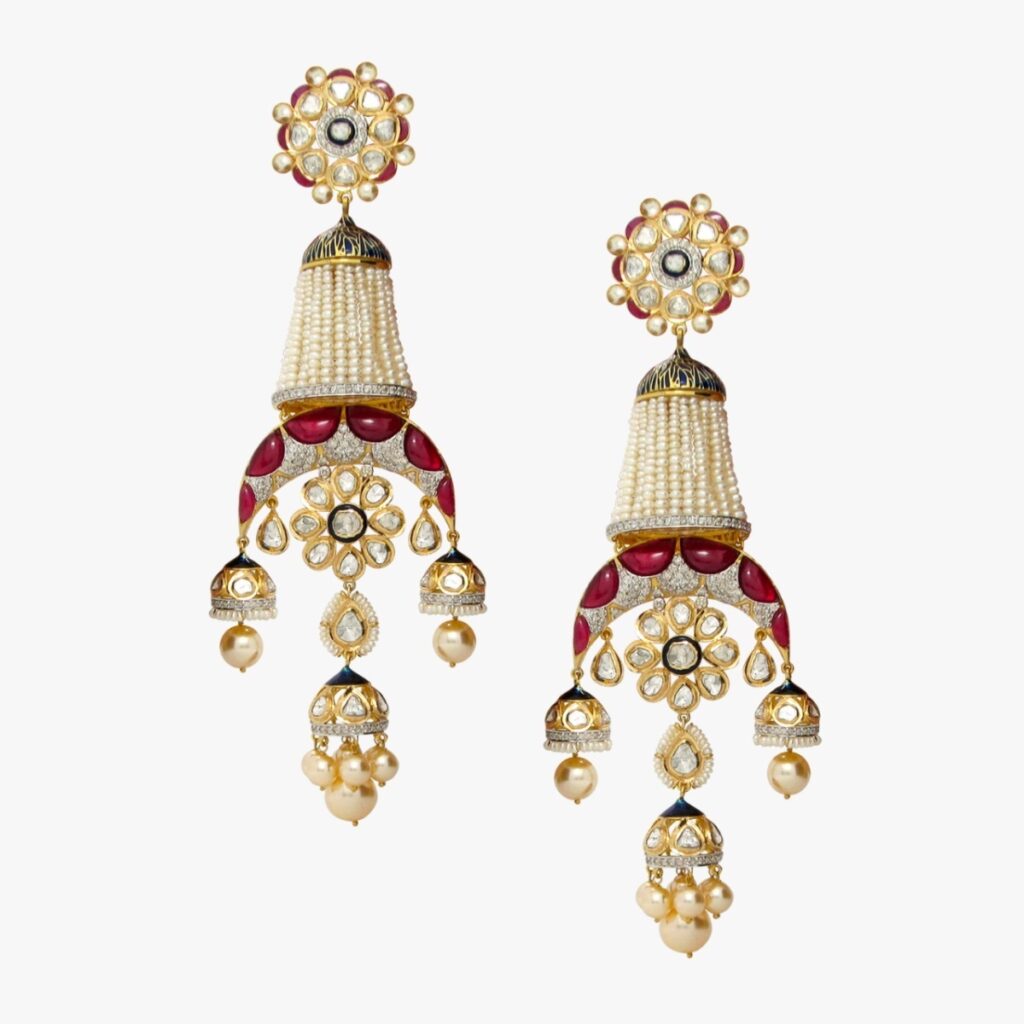
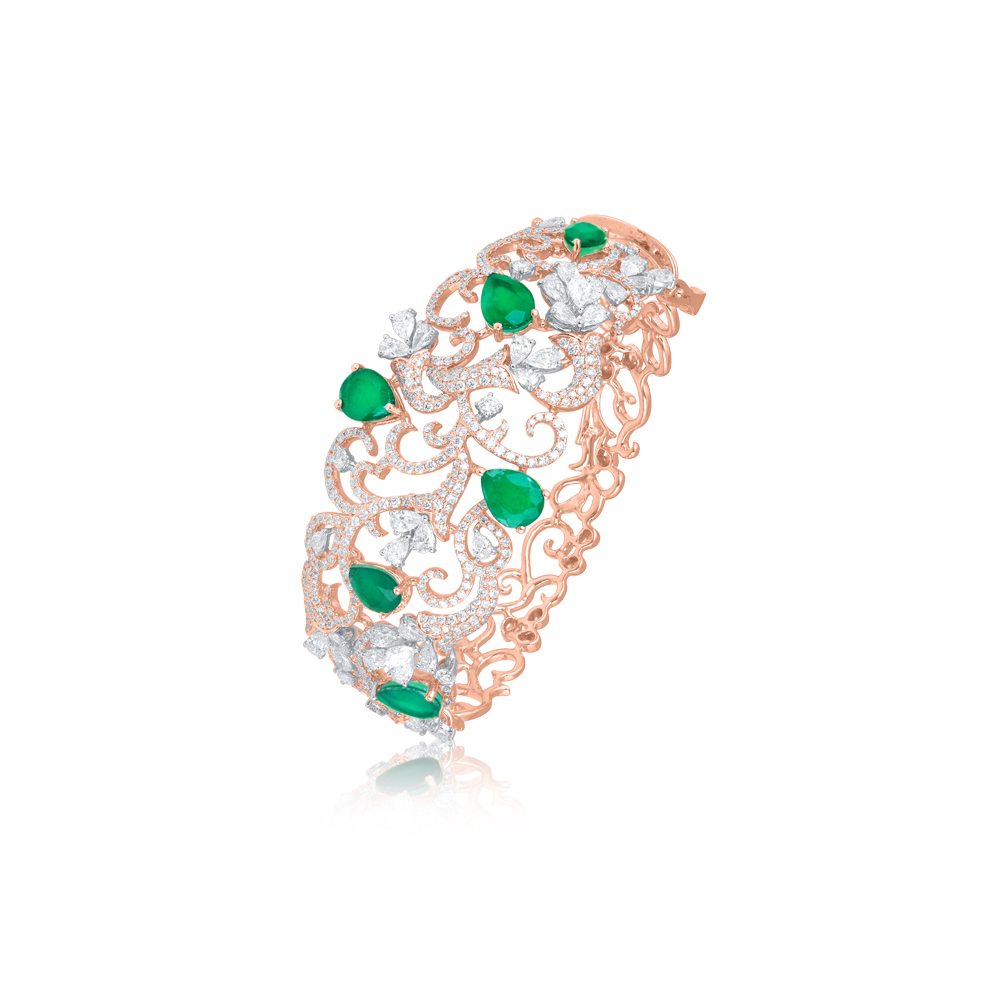

2. What steps can designers take to ensure they are drawing from a broad range of influences rather than just one or two sources, in order to create more original and diverse designs?
To create original and diverse designs, we encourage our designers to draw inspiration from various sources, including art, architecture, nature, and cultural heritage. We also foster a culture of collaboration and knowledge sharing among our team members, which helps to stimulate creativity and innovation.
3. What to do if your jewellery design is being copied? What are the legal implications to such plagiarism?
If we find our jewelry design is being copied, we promptly protect our rights by sending a cease-and-desist notice, seeking legal advice, or taking other actions to stop the infringement.
4. In your experience, how does acknowledging the influence of other designers in your work contribute to your growth as a designer, and how do you ensure that your own originality still shines through?
Recognizing the influence of other designers is vital for our growth. By acknowledging their contributions, we can learn from their experiences and create something original. We maintain our uniqueness by staying true to our brand’s vision and aesthetic.
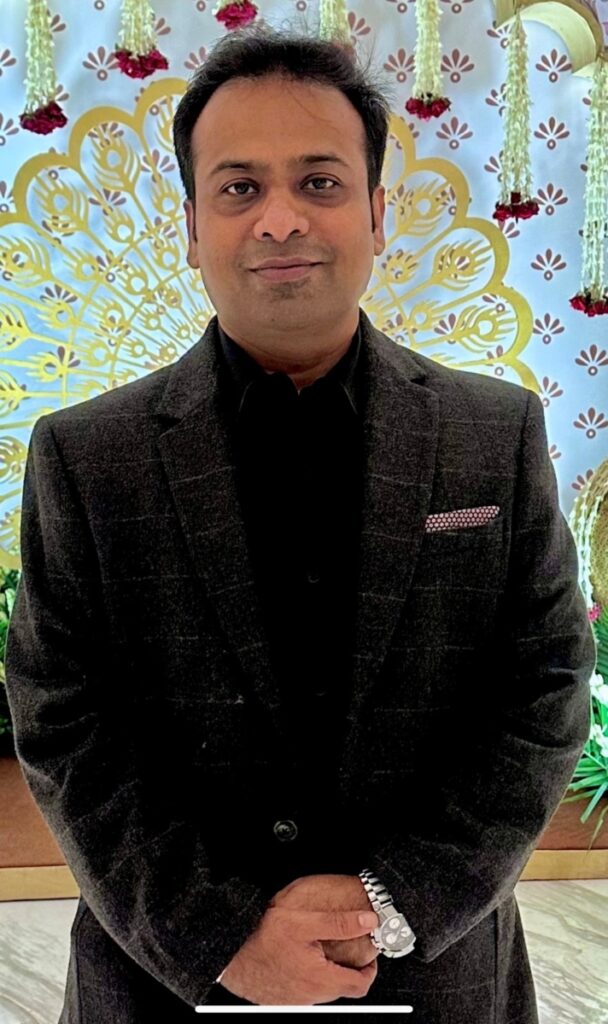
Mahabir Danwar Jewellers – Vijay Soni, Director
- How do you identify and cultivate your Unique Selling Proposition (USP) as a jewelry designer in a market full of competition?
At Mahabir Danwar Jewellers, our USP lies in the fusion of heritage craftsmanship, innovative design, and exclusivity. We stay true to our brand ethos—blending timeless elegance with modern creativity. Through research, trend awareness, and our signature design language, we ensure every collection tells a unique story and evokes a personal connection, setting us apart in a crowded market.
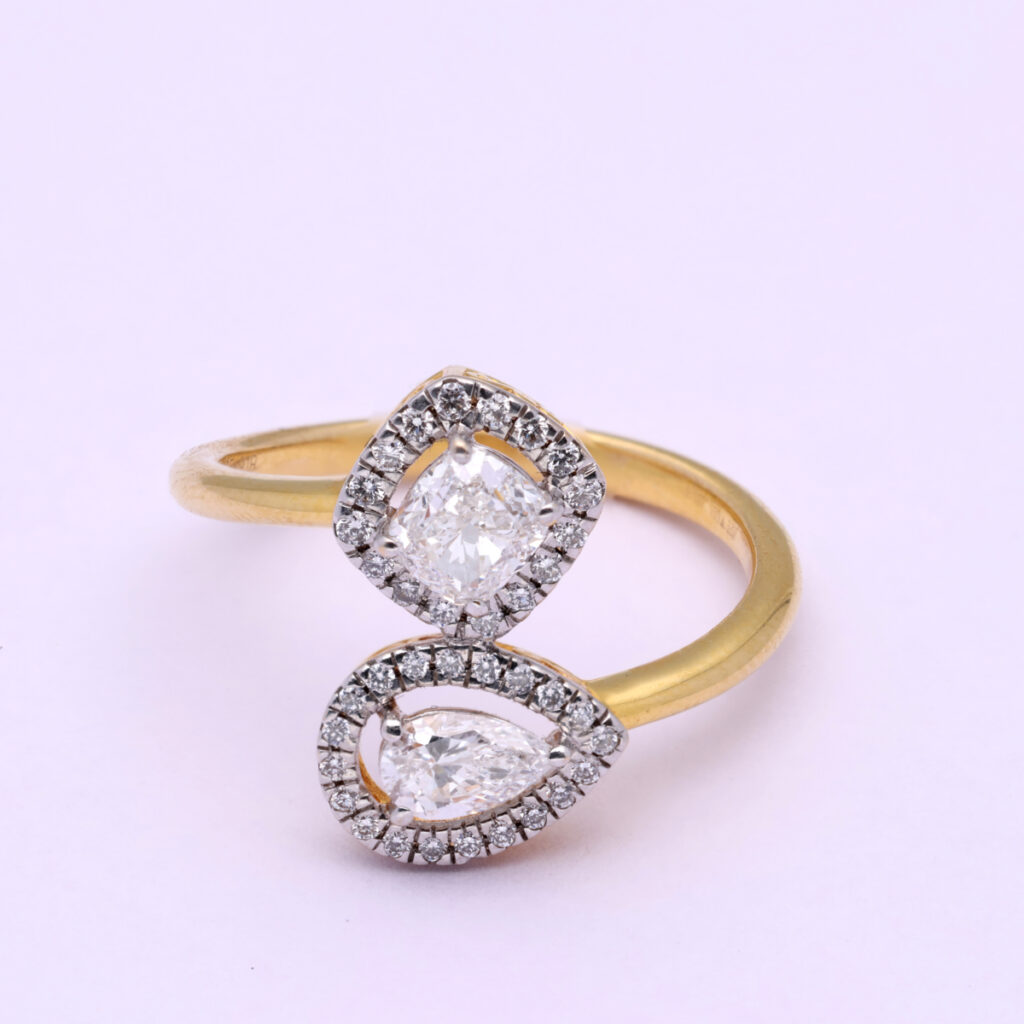
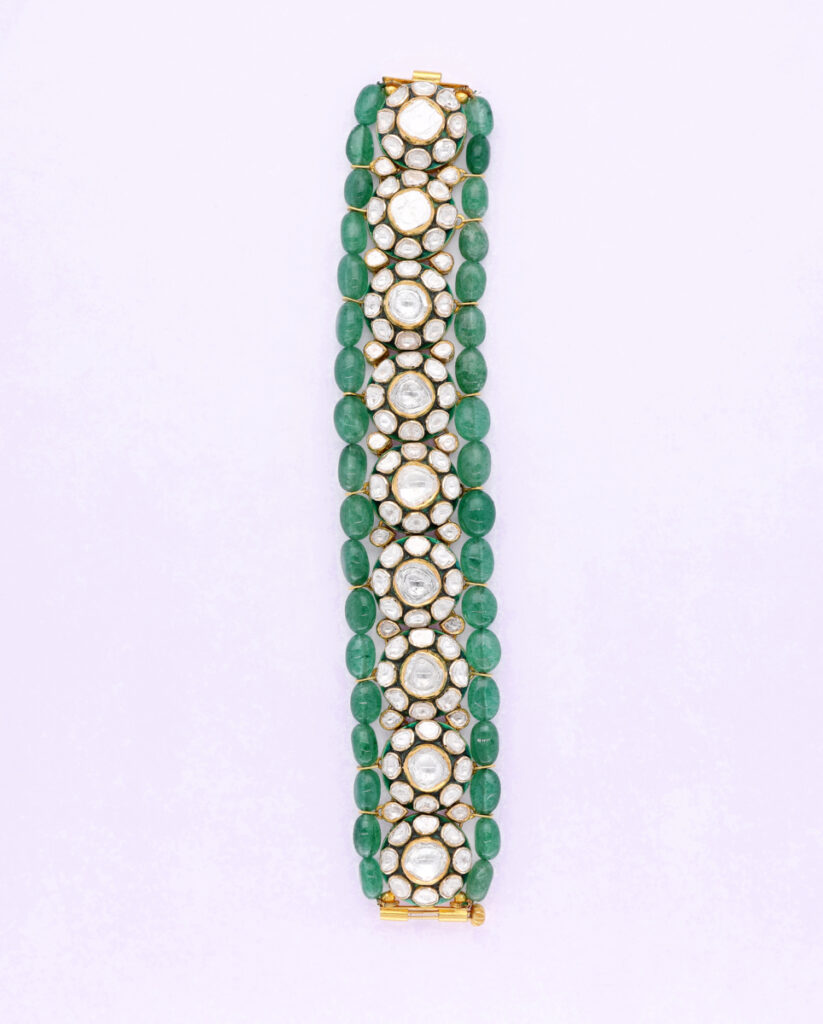
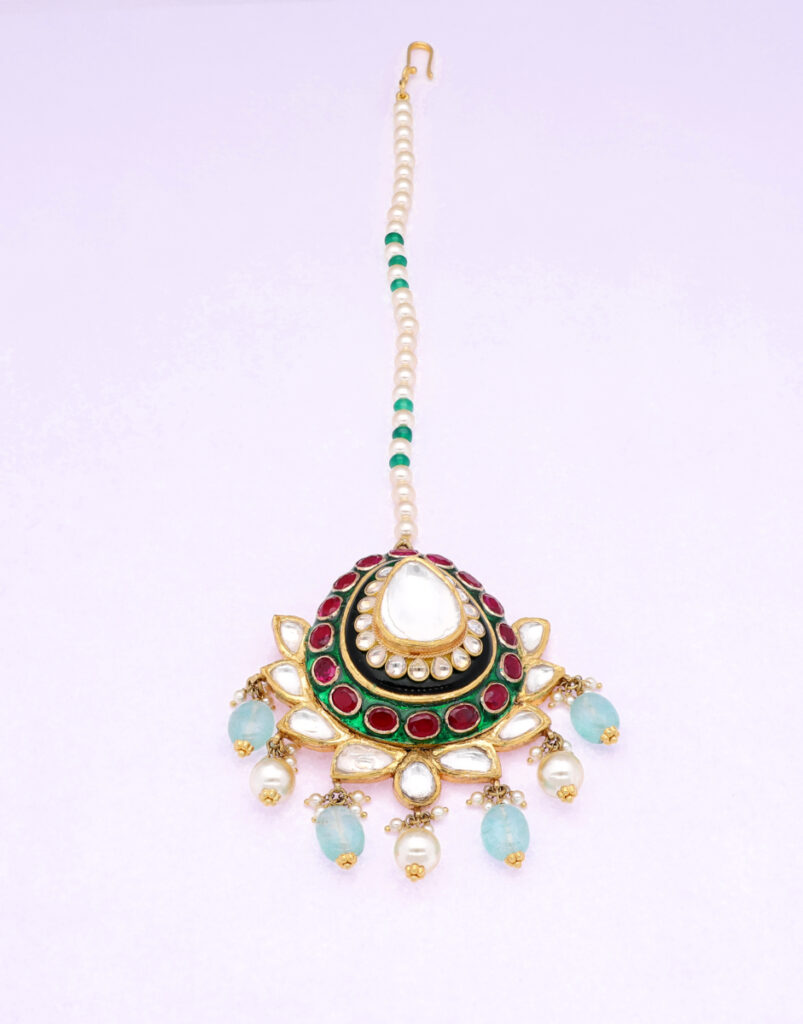
- What steps can designers take to ensure they are drawing from a broad range of influences to create original and diverse designs?
Originality comes from exploring beyond the obvious. Designers should:
• Draw from varied sources like architecture, nature, and fine arts
• Study global and historical craftsmanship
• Experiment with new materials and techniques
• Avoid trend-chasing and focus on building a personal voice
By broadening their creative lens, designers can avoid unintentional imitation and develop truly distinct designs.
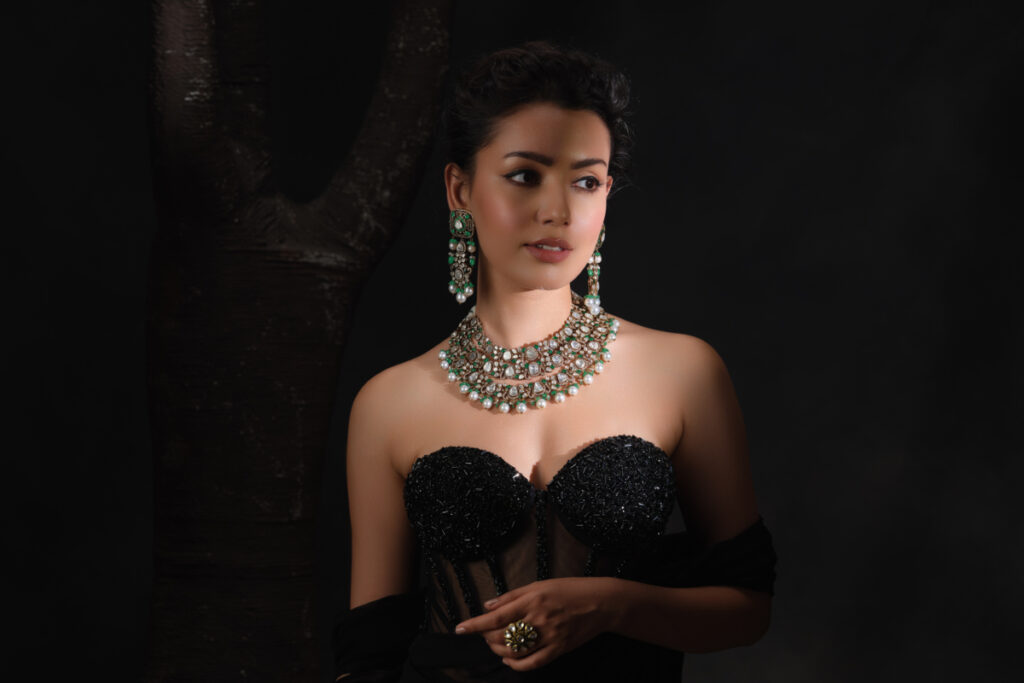
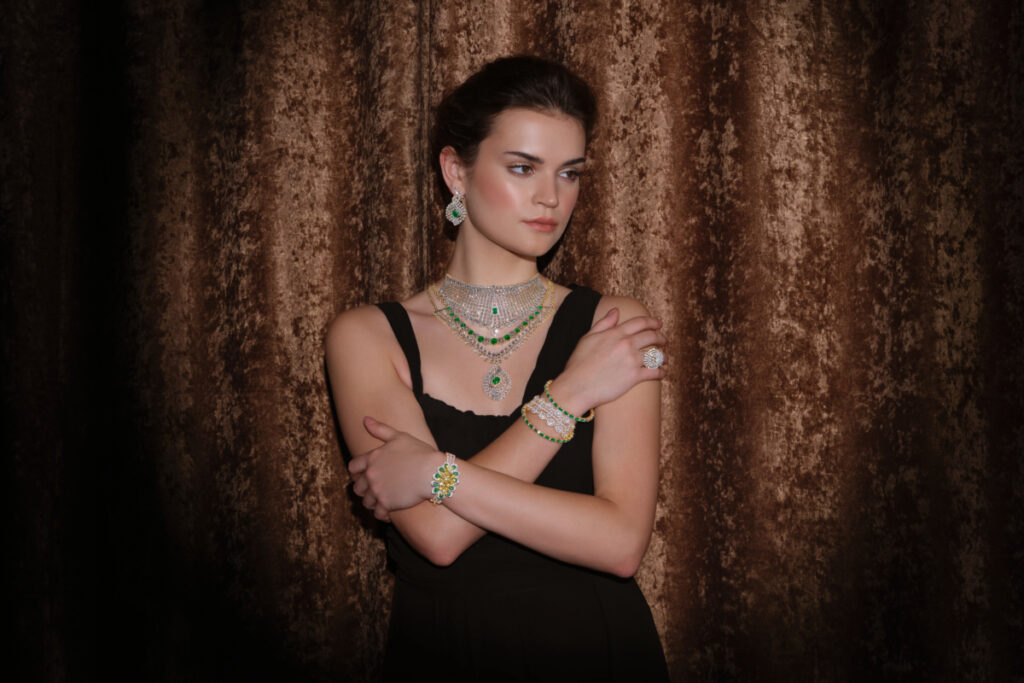
- What to do if your jewelry design is being copied? What are the legal implications of such plagiarism?
To protect designs:
• Register copyrights, trademarks, or design patents
• Take legal action, such as sending cease-and-desist notices
• Document the design process for proof of originality
• Raise awareness through industry platforms
Proactive protection is key to preserving exclusivity and creative ownership.
- How does acknowledging the influence of other designers help your growth while maintaining originality?
Acknowledging others’ work promotes learning and innovation. However, we ensure originality by:
• Using inspiration as a base, not a blueprint
• Infusing personal storytelling and brand identity
• Innovating through design, materials, and craftsmanship
• Continuously evolving our creative voice
Respecting influence while transforming it ensures our work stays authentic and uniquely ours.
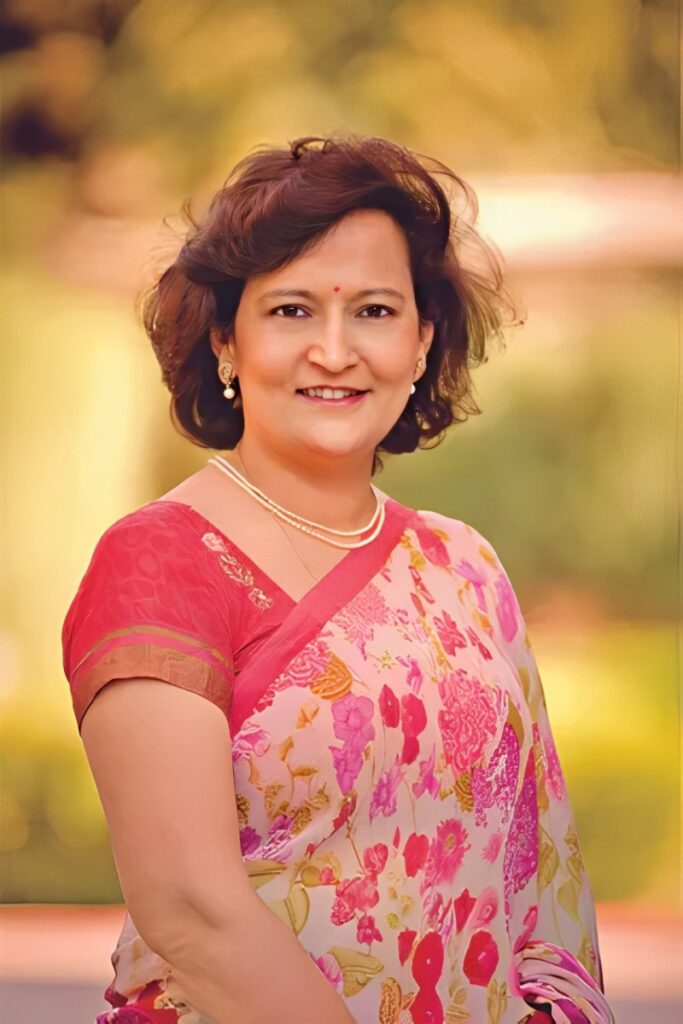
Neeta Boochra Jewellery
Neeta Boochra, Founder
1)What steps can designers take to ensure they are drawing from a broad range of influences rather than just one or two sources, in order to create more original and diverse designs?
Indian jewellery designers have access to a vast and layered cultural heritage, but relying too heavily on a few well-known motifs (like Mughal, temple, or tribal jewellery) can limit innovation. To ensure originality and a broader creative palette, Indian designers can take the following India-specific steps to diversify their influences and evolve their design language:

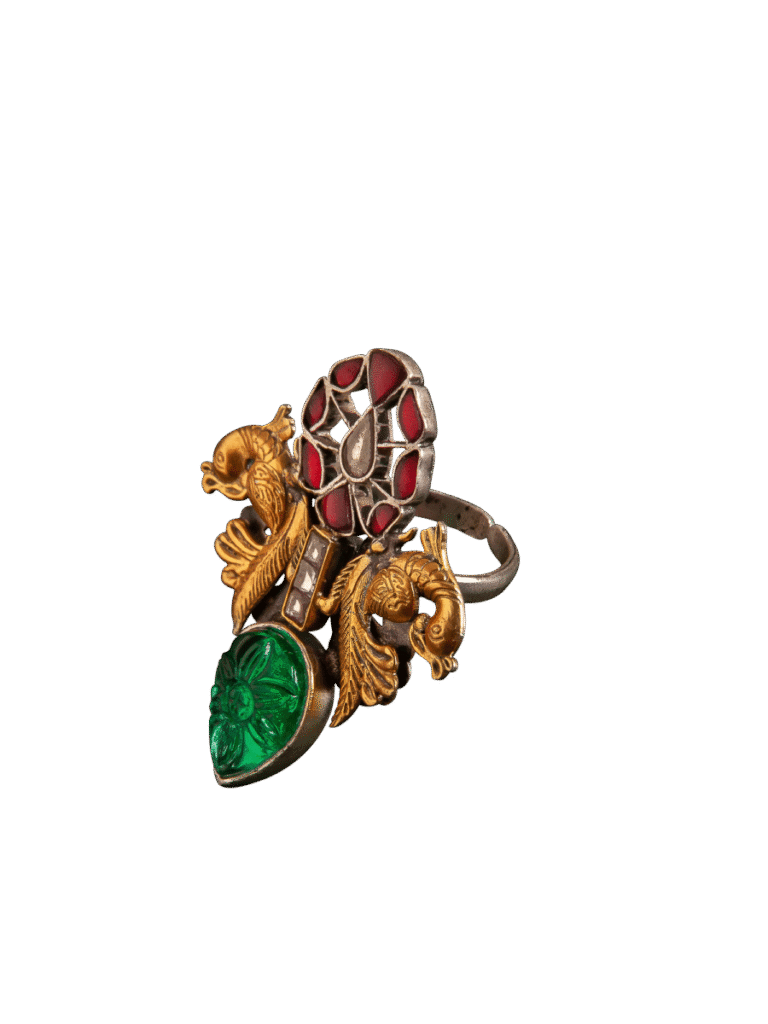
Explore Regional Diversity: Study lesser-known jewellery traditions from Northeast India, tribal areas, and rural crafts like Dokra, Bastar, or Manipuri designs.
Blend Tradition with Contemporary Indian Art: Take inspiration from modern Indian artists, textile patterns, or architectural forms like stepwells or temple carvings.
Use Indian Literature & Philosophy: Draw abstract concepts from epics, folktales, and philosophies (Hindu, Buddhist, Sufi) to deepen your narrative.
Tap into Natural and Urban Landscapes: Let India’s diverse geography and cityscapes inspire shapes, textures, and forms.
Reimagine Obscure Historical Styles: Revive and reinterpret jewellery from lesser-known dynasties or rare styles like Chettinad or Satavahana-era adornments.
Collaborate Across Crafts: Work with artisans from weaving, embroidery, pottery, or painting to bring fresh perspectives and techniques.


2. What to do if your jewellery design is being copied? What are the legal implications to such plagiarism?
If your jewellery design is being copied in India, you do have legal recourse, though the process depends on how you’ve protected your design. Here’s what you can do, along with the relevant legal implications under Indian law:

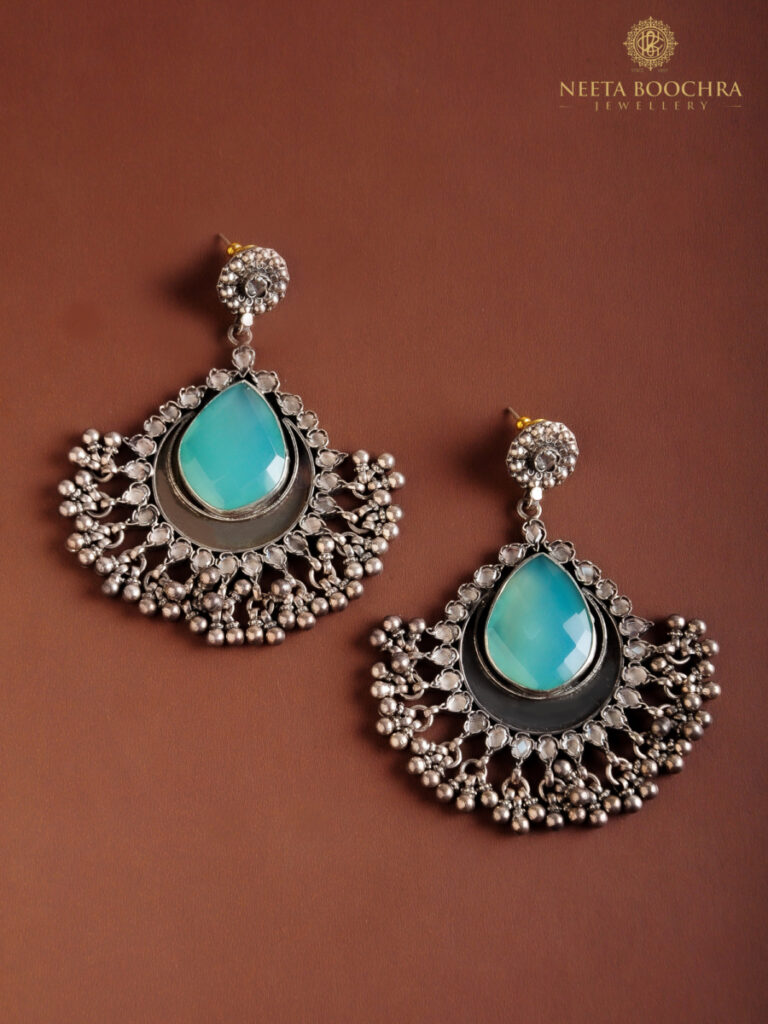
Collect Evidence
- Gather proof of your original design: sketches, CAD files, timestamps, emails, product photos, and public release dates.
- Take screenshots and purchase records of the copied designs for comparison.
Send a Legal Notice
- Through a lawyer, send a cease and desist notice to the infringing party demanding they stop production/sale immediately.
Take Civil or Criminal Action
- Civil remedies: You can seek injunctions, monetary damages, and destruction of copied goods.
3. In your experience, how does acknowledging the influence of other designers in your work contribute to your growth as a designer, and how do you ensure that your own originality still shines through?
Acknowledging the influence of other designers is not only a mark of integrity but also a powerful tool for personal growth
Promotes Humility and Learning: Recognizing others’ impact keeps you open to learning. It reminds you that design is a dialogue, not a solo performance.
Builds Deeper Understanding: When you consciously study and credit a designer’s work, you often uncover why it resonates with you—materials, philosophy, structure—helping you better refine your own preferences and style.
-
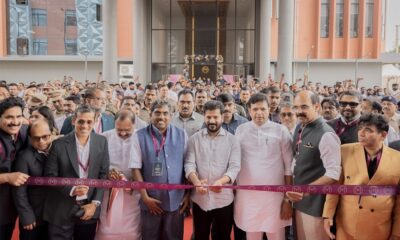
 National News1 week ago
National News1 week agoMalabar Gold & Diamonds Inaugurates Landmark Integrated Manufacturing Site in Hyderabad, Cementing Its Position as a Global Manufacturing Leader
-

 National News2 months ago
National News2 months agoEmmadi Silver Jewellery Launches First Karnataka Store with Grand Opening in Bengaluru’s Malleshwaram
-

 BrandBuzz3 months ago
BrandBuzz3 months agoMia by Tanishq Unveils ‘Fiora’ Collection This Akshaya Tritiya: A Celebration of Nature’s Blossoms and New Beginnings
-

 GlamBuzz2 months ago
GlamBuzz2 months agoGokulam Signature Jewels Debuts in Hyderabad with Glamorous Launch at KPHB




